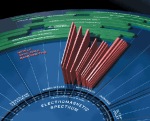 Small cells are meant as a solution to address the explosive growth in mobile data services, right? Well, the answer is: it depends! They can be a solution under certain conditions, but not always. Yes, there could be situations where small cells add little if any gain. In fact, more than one operator mentioned to me little or even no gain in overall capacity increase by their small cell pilot projects. So what’s happening, and why can we run into situations where small cells don’t deliver on their promise? Continue reading
Small cells are meant as a solution to address the explosive growth in mobile data services, right? Well, the answer is: it depends! They can be a solution under certain conditions, but not always. Yes, there could be situations where small cells add little if any gain. In fact, more than one operator mentioned to me little or even no gain in overall capacity increase by their small cell pilot projects. So what’s happening, and why can we run into situations where small cells don’t deliver on their promise? Continue reading
Behind The Headlines: Will Small Cells Thrive Under Spectrum Sharing Regime?
 Momentum for spectrum sharing is gathering strength, particularly for the 3.5 GHz band which is slated for small cell deployments. The NTIA has done detailed studies and prioritized this band ahead of other candidates such as 1700 MHz and 4 GHz bands for fast track evaluation. The FCC followed by issuing a Notice of Proposed Rulemaking (NPRM) to solicit comments from stakeholders. So what are some of the details behind the headlines? Continue reading
Momentum for spectrum sharing is gathering strength, particularly for the 3.5 GHz band which is slated for small cell deployments. The NTIA has done detailed studies and prioritized this band ahead of other candidates such as 1700 MHz and 4 GHz bands for fast track evaluation. The FCC followed by issuing a Notice of Proposed Rulemaking (NPRM) to solicit comments from stakeholders. So what are some of the details behind the headlines? Continue reading
Branding And The Wireless Value Chain
A close look at Interbrand’s best brands report reveals interesting results and insights on the wireless industry. Focusing on brands related to the telecommunication industry, which includes hardware, software, and content providers we find the following top brands for 2012:
How Small Cells Are Reshaping The Wireless Landscape
 There’s much talk about small cells these days – on industry news sites, at conferences, in corporate announcements. This is not surprising given that mobile traffic doubles every year and, according to Cisco, will grow at a compound annual growth rate (CAGR) of 78 percent from 2011 to 2016. Wireless network architecture has relied greatly on macrocells, but with the advent of the small cell era, how will small cells shape the wireless landscape? To answer, consider the following: Continue reading
There’s much talk about small cells these days – on industry news sites, at conferences, in corporate announcements. This is not surprising given that mobile traffic doubles every year and, according to Cisco, will grow at a compound annual growth rate (CAGR) of 78 percent from 2011 to 2016. Wireless network architecture has relied greatly on macrocells, but with the advent of the small cell era, how will small cells shape the wireless landscape? To answer, consider the following: Continue reading
Spectrum Sharing: The Wireless Carpool Lane
 The vision of urban planners in the late 1940’s and 1950’s was that of a suburban population commuting to work in the main city. People flocked to the suburbs and highways were built to connect suburbs with cities; cars were sold and soon enough the model became unsustainable. More highways were needed and existing ones needed more lanes. The model became prohibitively expensive not to mention rising public awareness to environmental issues resulting from car emissions. Municipalities soon realized the need for solutions to congested highways. One such solution is the carpool lane open to vehicles with more than one passenger. Shared transportation became encouraged: if you car pool, you’ll save time, money and help save the environment.
The vision of urban planners in the late 1940’s and 1950’s was that of a suburban population commuting to work in the main city. People flocked to the suburbs and highways were built to connect suburbs with cities; cars were sold and soon enough the model became unsustainable. More highways were needed and existing ones needed more lanes. The model became prohibitively expensive not to mention rising public awareness to environmental issues resulting from car emissions. Municipalities soon realized the need for solutions to congested highways. One such solution is the carpool lane open to vehicles with more than one passenger. Shared transportation became encouraged: if you car pool, you’ll save time, money and help save the environment.
Wireless communications is similar in many respects. Spectrum is a scarce resource, as much as highway capacity is a limited one. More spectrum has been the mantra to date, much as more and wider highways was thirty years ago. Operator’s message to regulator is a simple one: traffic demand will exceed supply; we need more spectrum; and not all bands will work out for us. This obviously is not sustainable for the long term much as building more highways is. Continue reading
My Top 10 Most Read Posts of 2012.
 Below is a list of my top-10 most read posts of 2012. Older posts would get more views than recent ones and I have no way of knowing the numbers of RSS subscriptions, etc. Also, I am hoping that viewed posts equals read posts, but there are no guarantees! Nevertheless, this is still of interest and I thought to share it with my readers.
Below is a list of my top-10 most read posts of 2012. Older posts would get more views than recent ones and I have no way of knowing the numbers of RSS subscriptions, etc. Also, I am hoping that viewed posts equals read posts, but there are no guarantees! Nevertheless, this is still of interest and I thought to share it with my readers.
Review of the Multi-Frequency Irish and Dutch Spectrum Auctions
 The Irish multi-frequency spectrum auction concluded on November 15th raising a respectable 854€ million ($1.1 billion) from four bidders on licenses for 280 MHz in the 800, 900, and 1800 MHz bands. Earlier this month, on December 14th, the Dutch multi-frequency auction of about 360 MHz netted the regulator over 3.8€ billion ($4.97 billion).
The Irish multi-frequency spectrum auction concluded on November 15th raising a respectable 854€ million ($1.1 billion) from four bidders on licenses for 280 MHz in the 800, 900, and 1800 MHz bands. Earlier this month, on December 14th, the Dutch multi-frequency auction of about 360 MHz netted the regulator over 3.8€ billion ($4.97 billion).
Both regulators did not report the price paid on a per-band/license basis. But on average, the Irish spectrum is priced at about 0.48 euro-cent per MHz-PoP (0.61₵), while the Dutch auction is priced at 0.63 euro-cent per MHz-PoP (0.83₵). Continue reading
Small Cells and the Predictability Challenge
 Anyone closely involved with small cells base station could not have failed to notice the contentious debate on backhaul capacity requirements. On the one hand, vendors of millimeter wave equipment advocate the need to support peak capacity figures, while on the other hand, vendors of other types of backhaul solution including point-to-multipoint systems point that the peak is rarely if ever achieved in practice. Continue reading
Anyone closely involved with small cells base station could not have failed to notice the contentious debate on backhaul capacity requirements. On the one hand, vendors of millimeter wave equipment advocate the need to support peak capacity figures, while on the other hand, vendors of other types of backhaul solution including point-to-multipoint systems point that the peak is rarely if ever achieved in practice. Continue reading
What’s the Deal with MSS Spectrum?
 Mobile Satellite Services (MSS) spectrum is bustling with activity. With so many failed satellite service companies, it is no surprise that spectrum earmarked for such services be converted, or allowed to co-exist with profitable mobile services. Here, I like to summarize some of the developments surrounding MSS spectrum. Continue reading
Mobile Satellite Services (MSS) spectrum is bustling with activity. With so many failed satellite service companies, it is no surprise that spectrum earmarked for such services be converted, or allowed to co-exist with profitable mobile services. Here, I like to summarize some of the developments surrounding MSS spectrum. Continue reading
In Focus: US Spectrum Service Allocation
 Ever wondered how spectrum is allocated to different services? I recently came across the pie chart below showing allocation of spectrum between 108 and 6000 MHz for a “typical” European country. I decided to do a similar exercise for US spectrum allocation.
Ever wondered how spectrum is allocated to different services? I recently came across the pie chart below showing allocation of spectrum between 108 and 6000 MHz for a “typical” European country. I decided to do a similar exercise for US spectrum allocation.
But first I like to give a brief overview of how spectrum is allocated. There are two organizations responsible for spectrum in the US: the National Telecommunications and Information Administration (NTIA) regulates spectrum use for federal users and the Federal Communication Commission (FCC) regulates spectrum use for non-federal users (including local and state governments). Spectrum bands can be designated for exclusive Federal users, or exclusively for non-federal users. But often, spectrum is shared between the two. Continue reading
Summary of Select Spectrum Auction Results
 Below is a summary of spectrum auctions completed this year that I did not report on. Some of these auctions are particularly interesting. For example, the 2.3 GHz band auction in Hong Kong follows a failed attempt to auction this band in early 2009. At that time, the hype around WiMAX was subsiding as interest in LTE was gathering strength. Now, three companies won the 90 MHz band for about $61m. One of the winners told me of their plan to use the band for LTE services, although this would be TD-LTE. No indication as to when it will happen. Continue reading
Below is a summary of spectrum auctions completed this year that I did not report on. Some of these auctions are particularly interesting. For example, the 2.3 GHz band auction in Hong Kong follows a failed attempt to auction this band in early 2009. At that time, the hype around WiMAX was subsiding as interest in LTE was gathering strength. Now, three companies won the 90 MHz band for about $61m. One of the winners told me of their plan to use the band for LTE services, although this would be TD-LTE. No indication as to when it will happen. Continue reading
In Focus: Interference in the 2.4 GHz ISM Band
 In my previous blog entry, I set out to answer the question of how much WiFi is deployed. Here, I like to focus on the question of interference. Unfortunately, I think there are fewer studies that characterize WiFi usage and interference than there ought to be. I will show here a few of the results and conclusions and present my own model and take on interference.
In my previous blog entry, I set out to answer the question of how much WiFi is deployed. Here, I like to focus on the question of interference. Unfortunately, I think there are fewer studies that characterize WiFi usage and interference than there ought to be. I will show here a few of the results and conclusions and present my own model and take on interference.
How Much WiFi Is Out There?
 The success of WiFi is nothing short of outstanding. Who would have thought that wireless network operators would adopt the technology and deploy WiFi access nodes in their tens of thousands to off-load their wide area networks? But with more carrier WiFi being rolled out in addition to your typical enterprise and personal access nodes, how much WiFi is out there? How much interference does it generate? And what does that say about the future when it comes to unlicensed band spectrum utilization? Continue reading
The success of WiFi is nothing short of outstanding. Who would have thought that wireless network operators would adopt the technology and deploy WiFi access nodes in their tens of thousands to off-load their wide area networks? But with more carrier WiFi being rolled out in addition to your typical enterprise and personal access nodes, how much WiFi is out there? How much interference does it generate? And what does that say about the future when it comes to unlicensed band spectrum utilization? Continue reading
In Focus: The Where, Who and What of the 3.65 GHz Band
 The FCC adopted the rules for the 3.65 – 3.7 GHz band in May 2007, a good nine years after it first proposed to allocate the band to non-Government fixed services on a primary basis. This timeline coincided with parallel development of WiMAX where equipment based on the fixed version of the standard (IEEE 802.16d) first came to market in 2005. In this post, I look at deployments in this band especially as it called for certain features to accommodate co-existence between different systems. But first, here’s a very brief overview of some of the regulatory features. Continue reading
The FCC adopted the rules for the 3.65 – 3.7 GHz band in May 2007, a good nine years after it first proposed to allocate the band to non-Government fixed services on a primary basis. This timeline coincided with parallel development of WiMAX where equipment based on the fixed version of the standard (IEEE 802.16d) first came to market in 2005. In this post, I look at deployments in this band especially as it called for certain features to accommodate co-existence between different systems. But first, here’s a very brief overview of some of the regulatory features. Continue reading
Challenges & Impediments to Implementing Spectrum Sharing
 There are several problems to overcome in making spectrum sharing a reality. Some are technical but more often than not, it is easier to overcome those hurdles than commercial ones. So what are those challenges? And when can we expect to resolve them to make spectrum sharing a reality? Continue reading
There are several problems to overcome in making spectrum sharing a reality. Some are technical but more often than not, it is easier to overcome those hurdles than commercial ones. So what are those challenges? And when can we expect to resolve them to make spectrum sharing a reality? Continue reading
